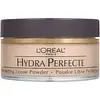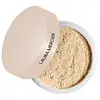What's inside
What's inside
 Key Ingredients
Key Ingredients

No key ingredients
 Benefits
Benefits

No benefits
 Concerns
Concerns

 Ingredients Side-by-side
Ingredients Side-by-side

Nylon-12
Ptfe
Acrylates Copolymer
Trioctyldodecyl Citrate
EmollientMagnesium Stearate
Cosmetic ColorantBoron Nitride
AbsorbentParaffinum Liquidum
EmollientLauroyl Lysine
Skin ConditioningIsopropyl Titanium Triisostearate
EmollientParfum
MaskingBenzyl Salicylate
PerfumingHydroxyisohexyl 3-Cyclohexene Carboxaldehyde
MaskingAlpha-Isomethyl Ionone
PerfumingHydroxycitronellal
PerfumingGeraniol
PerfumingCoumarin
PerfumingHexyl Cinnamal
PerfumingLinalool
PerfumingIsoeugenol
PerfumingEugenol
PerfumingCinnamyl Alcohol
PerfumingCitronellol
PerfumingMica
Cosmetic ColorantCI 77499
Cosmetic ColorantCI 77491
Cosmetic ColorantCI 77492
Cosmetic ColorantCI 77120
Cosmetic ColorantCI 77891
Cosmetic ColorantNylon-12, Ptfe, Acrylates Copolymer, Trioctyldodecyl Citrate, Magnesium Stearate, Boron Nitride, Paraffinum Liquidum, Lauroyl Lysine, Isopropyl Titanium Triisostearate, Parfum, Benzyl Salicylate, Hydroxyisohexyl 3-Cyclohexene Carboxaldehyde, Alpha-Isomethyl Ionone, Hydroxycitronellal, Geraniol, Coumarin, Hexyl Cinnamal, Linalool, Isoeugenol, Eugenol, Cinnamyl Alcohol, Citronellol, Mica, CI 77499, CI 77491, CI 77492, CI 77120, CI 77891
Mica
Cosmetic ColorantLauroyl Lysine
Skin ConditioningZinc Stearate
Cosmetic ColorantAluminum Starch Octenylsuccinate
AbsorbentSilica
AbrasiveC13-15 Alkane
SolventEthylhexylglycerin
Skin ConditioningHelianthus Annuus Seed Oil
EmollientTocopherol
AntioxidantSodium Hyaluronate
HumectantSorbic Acid
PreservativeBlue 1 Lake
Cosmetic ColorantIron Oxides
CI 77742
Cosmetic ColorantCI 15850
Cosmetic ColorantCI 77891
Cosmetic ColorantCI 77007
Cosmetic ColorantCI 19140
Cosmetic Colorant
 Reviews
Reviews

Ingredients Explained
These ingredients are found in both products.
Ingredients higher up in an ingredient list are typically present in a larger amount.
Ci 77891 is a white pigment from Titanium dioxide. It is naturally found in minerals such as rutile and ilmenite.
It's main function is to add a white color to cosmetics. It can also be mixed with other colors to create different shades.
Ci 77891 is commonly found in sunscreens due to its ability to block UV rays.
Learn more about CI 77891This ingredient comes from a fatty acid (lauric acid) and amino acid (lysine). It is used to add a silky feel to cosmetics.
According to a manufacturer, its fatty acid base leaves a silky feeling on the skin. It also has emollient properties because of this. Emollients help soften skin by preventing water from evaporating.
Lauroyl lysine is barely soluble in water.
Learn more about Lauroyl LysineMica is a naturally occurring mineral used to add shimmer and color in cosmetics. It can also help improve the texture of a product or give it an opaque, white/silver color.
Serecite is the name for very fine but ragged grains of mica.
This ingredient is often coated with metal oxides like titanium dioxide. Trace amounts of heavy metals may be found in mica, but these metals are not harmful in our personal products.
Mica has been used since prehistoric times throughout the world. Ancient Egyptian, Indian, Greek, Roman, Aztec, and Chinese civilizations have used mica.
Learn more about Mica